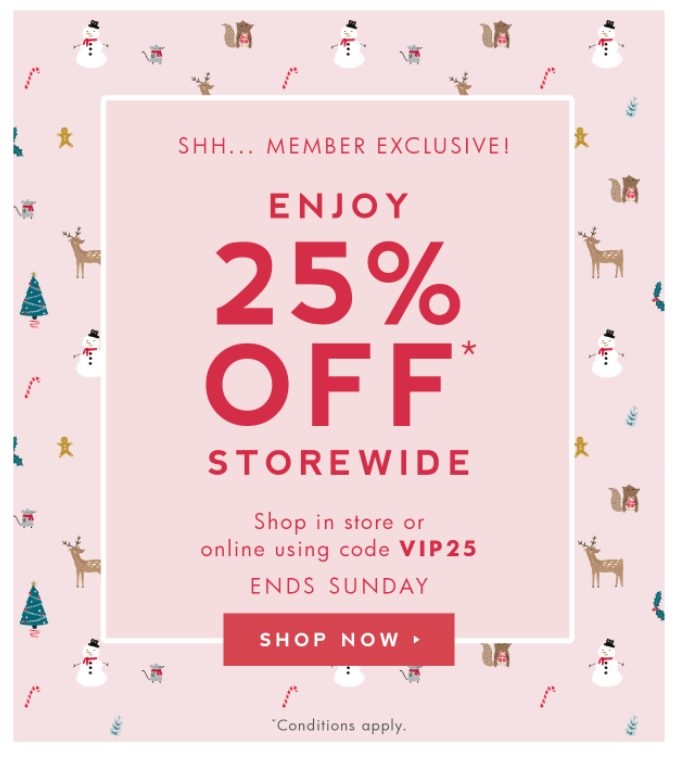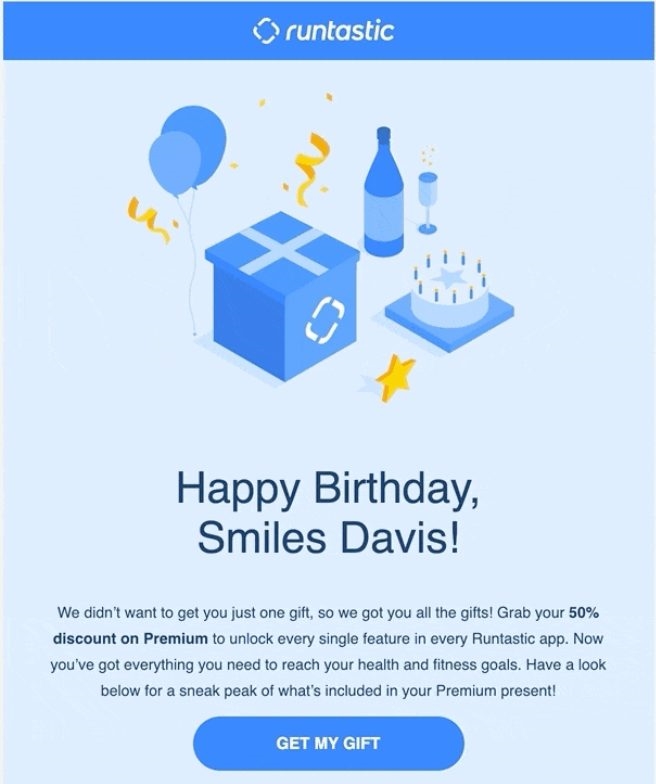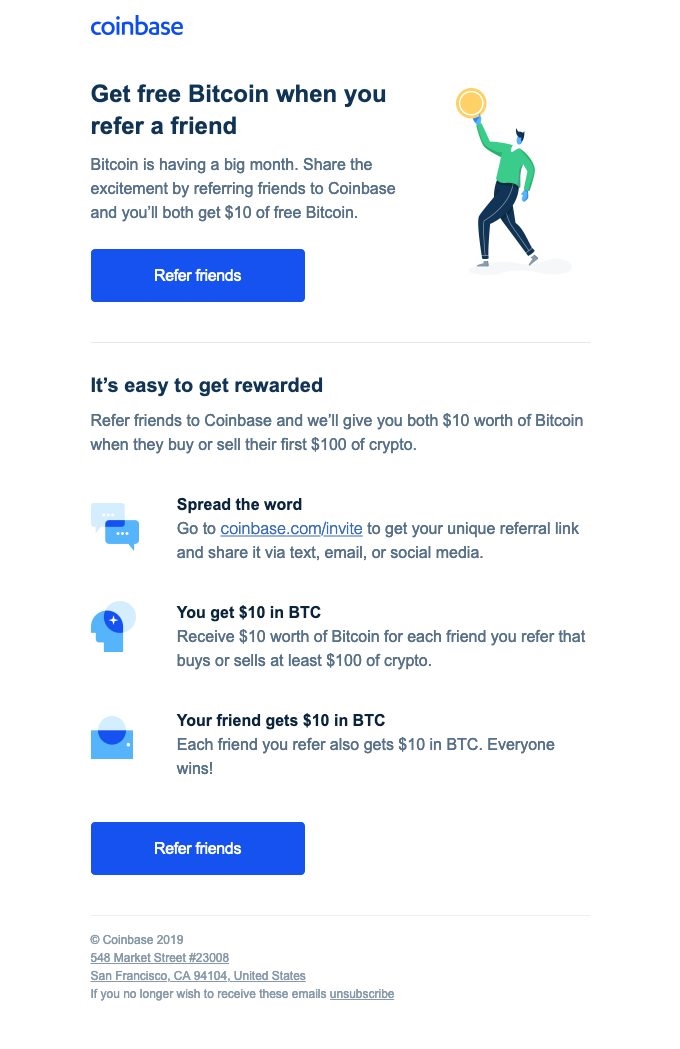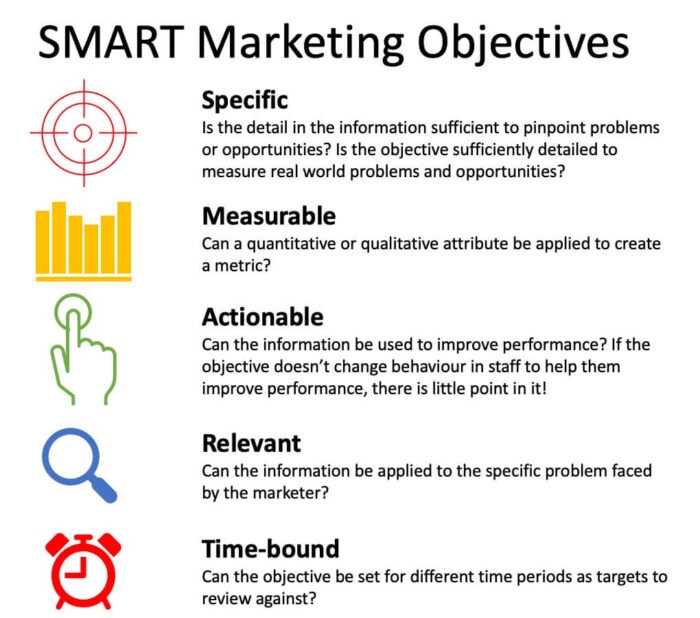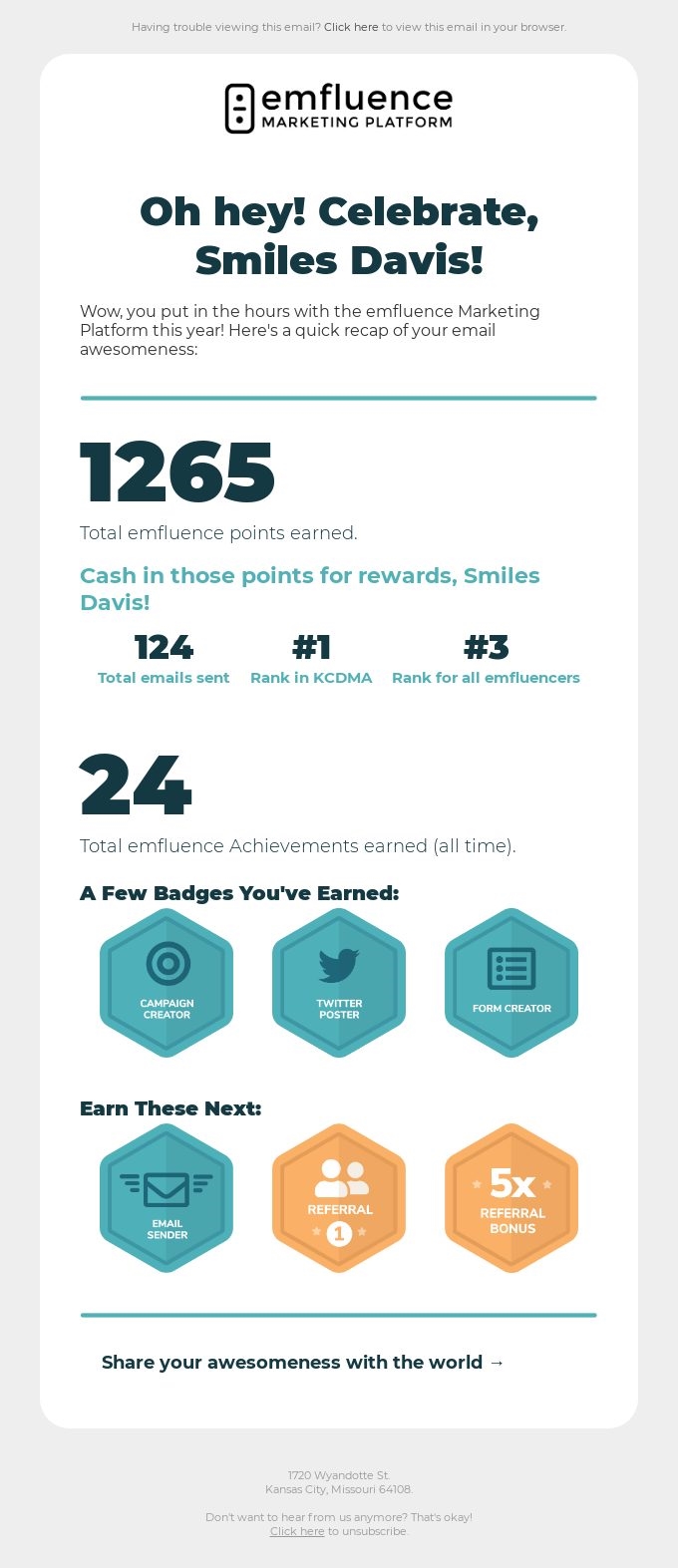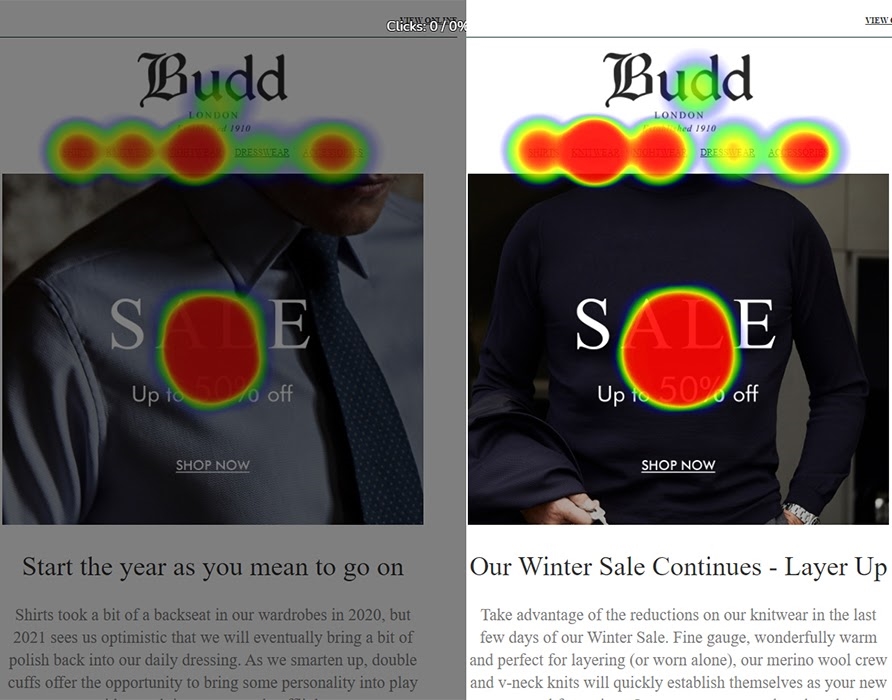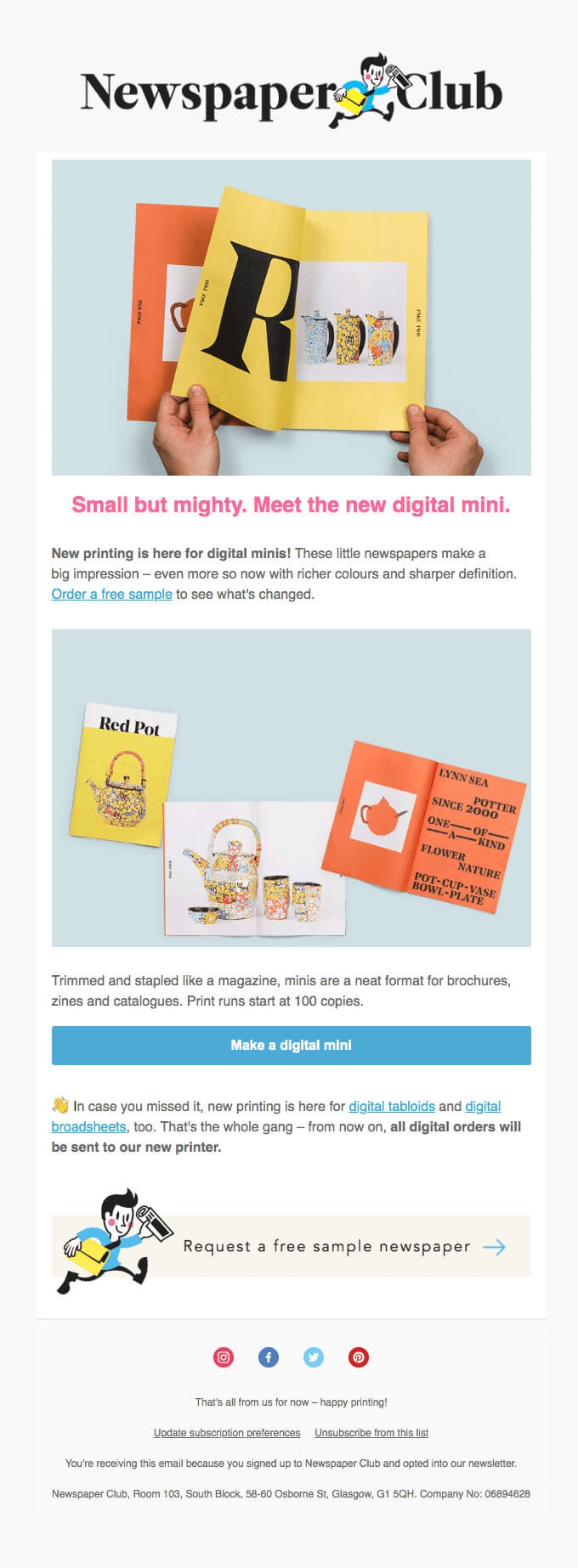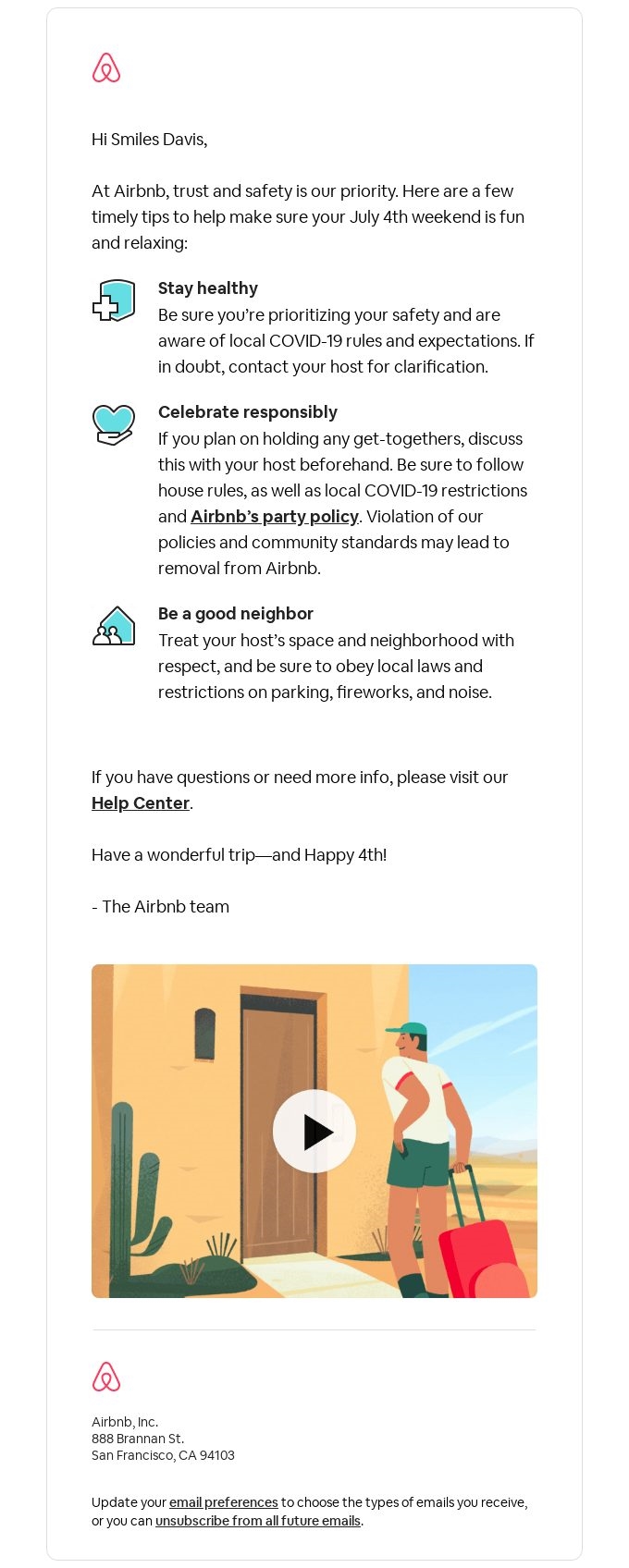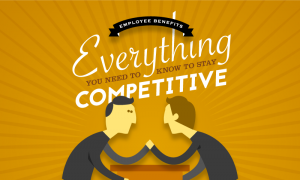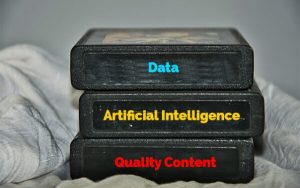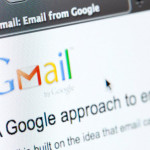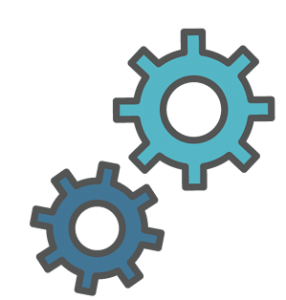If you’ve been in business for any amount of time, you may well have heard the phrase, “the money is in the list.”
It’s a proverb as old as the internet, probably older. It’s also true. And more relevant than ever. If you want to build a successful business, a strong email marketing strategy is one of the best ways to do it.
However, it’s not without challenges. Over a third of email marketers struggle with acquisition and close to a half say increasing engagement is their number one challenge.
Email generates as much as $ 42 for every dollar spent, and is a top-three marketing channel for 87% of B2B and 76% of B2C marketers.
In this post, you’ll learn how to overcome the challenges and reap the rewards to collect subscribers, users, and loyal customers.
We’ll look at where email fits in the customer journey and walk you through how to create a strategy that fits your customer lifecycle. We’ll also break down the main elements of high-performing emails to show you how to drive action from your campaigns.
Email marketing’s place in the customer journey (and how it contributes to your marketing strategy)
Customer journeys are rarely linear. But if we consider that a journey map is built on the five stages of the customer lifecycle (awareness, consideration, purchase, retention, and advocacy), we can start to see how email contributes to a marketing strategy at every point.
1. Awareness
During the awareness stage, prospects are beginning to learn who you are and what you can do for them. Providing valuable content or assets is a clever way to build trust and familiarity.
For example, you can partner with social media and PPC teams to create content that encourages subscribers to sign up to receive something of value.
Children’s education company Talu Tales uses its social channels to do just that—in this case, promoting free activity sheets:
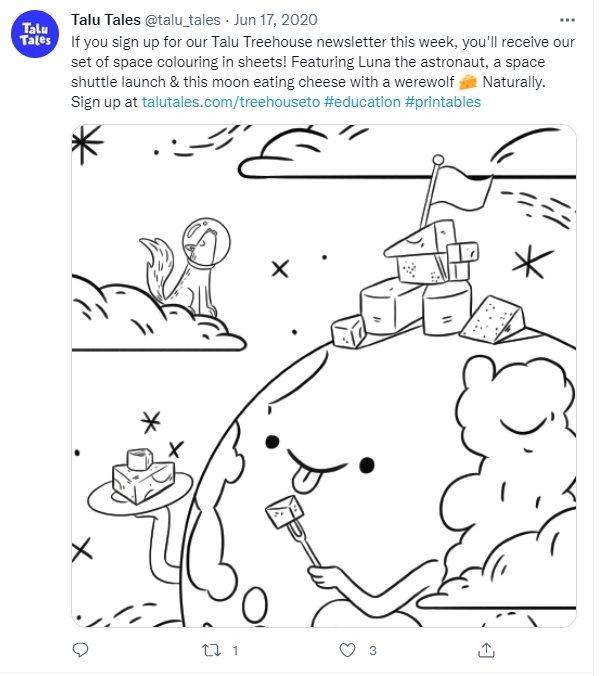
New subscribers are sent an automated email with their free goodies, as well as links to other relevant reading material:
Nothing is being sold at this stage. Instead, Talu Tales is delivering a valuable experience that can be nurtured towards a sale. They’ve also given subscribers a reason to learn more.
2. Consideration
Once intrigued, customers are interested in learning more about what you can offer them. Use the data you’ve gathered from your email subscription form to send personalized content addressing pain points.
reMarkable does this by leveraging testimonials to show how its paper tablet has made a real-life difference:
It’s a clever tactic. As many as 97% of people read product reviews before making a purchase and 89% consider them an essential resource.
They also include links for prospects to check out those customers for themselves. This “don’t take our word for it” tactic is smart, given that people trust industry experts and people like themselves more than a company advocate or even influencers.
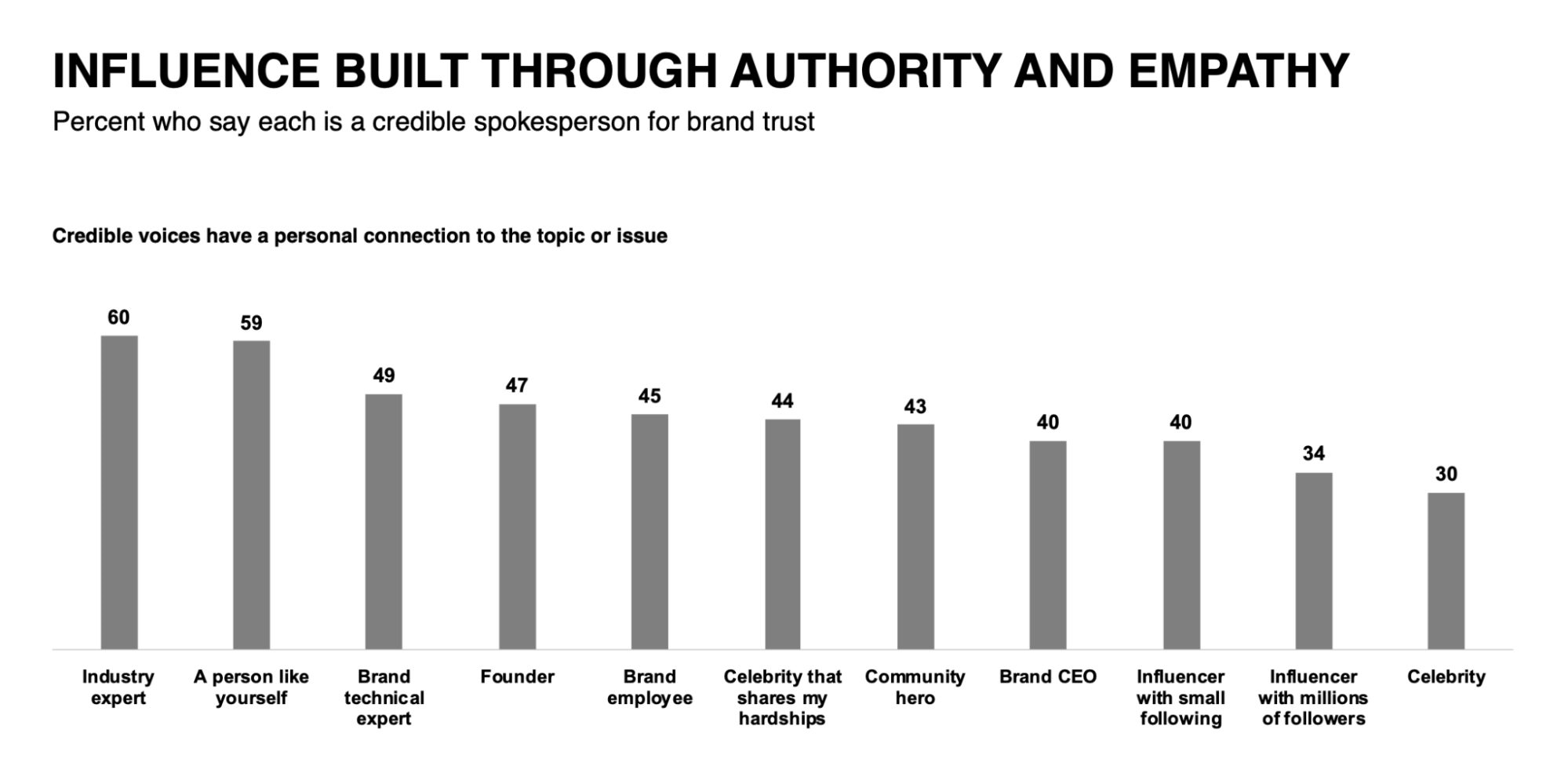
Emails in the consideration stage can also be used to re-engage customers who have abandoned their cart
Adidas does this with humor, as well as convincing reviews to entice prospects still on the fence:
Again, the use of “Think we’re biased?” is clever, as the customer is likely thinking “Of course you are.”
The follow-up and additional reviews speak to the consumer’s subconscious mind. They work to justify the emotion the person was feeling when they initially added an item to their cart before the doubt crept in.
Adding the product to their basket was the right thing to do. The reviews prove it.
3. Purchase
Email can be used effectively before and after purchase.
At the conversion stage, just before purchase, your aim is to hammer home why your product is perfect for your prospect.
There are several ways you can do this:
- An automated email series, ebook, or PDF that goes into detail on the benefits of your product or service
- An invitation to a webinar to show off your product or service
- A free trial to your product
Alternatively, you can convince prospects with limited-time special offers or discount codes.
Persona did this by offering a 50% first-month discount to new subscribers. This offer is backed by reasons why Persona is the best choice for the prospect, making a compelling case for hitting that CTA:
Once you have a purchase in the bag, the rules of engagement change to earning customer loyalty. This is where transactional emails are a key customer experience tool.
When a customer has bought from you, be sure to send:
- Order notifications
- Delivery updates
- A thank you note
- Follow-up emails with product recommendations
For buyers of The Perfect Grid, author Ales Nesertril sends an automated thank you email with instructions to help new customers make the most of their purchase, as well as what to expect going forward:
65% of consumers say they would become long-term customers of a brand if they can provide positive experiences throughout the customer journey. A helpful and genuine follow-up email can be the difference between one-time shoppers and brand advocates.
4. Retention
Building loyalty starts with what you do post-purchase and continues with retention emails. Unlike other digital marketing channels, email lets you provide a truly personalized experience.
This can be through subscriber-only discounts:
Acknowledging birthdays:
Or asking for feedback:
When a person opens your email, it’s just you and them. Use this space to show your customers they are a valued part of your community.
5. Advocacy
Advocacy is when customers become fans and an important asset to your company. As Peakon’s Head of Customer Marketing, Larisa Sandu, points out:
“Customer advocates become extensions of a company’s employee base – they live and breathe your company’s ethos and spread the mission of your company to others out of genuine interest in your company’s success.” [via B2B Marketing Alliance]
At this stage in the customer journey, email can be used to capitalize on fans’ love of your brand by:
- Asking them to refer you or forward your emails to their friends
- Promoting an affiliate or reward program where customers are given incentives for participation
- Offering incentives for writing reviews
- Collecting feedback to improve your products and services
For example, Coinbase offers customers and their friends $ 10 worth of Bitcoin for every referral:
They also show how easy it is to get rewarded, which helps reduce barriers and spur involvement.
Email fits everywhere
Email works at every stage of the customer journey.
That’s not to say it’s the right strategy to use every time, nor is it the only strategy. Customer journey maps should include a combination of content marketing, paid advertising, customer service, PR, and email at every touchpoint.
But email should align closely with your marketing plans and be utilized whenever you need to:
- Build trust
- Communicate with a qualified audience
- Communicate through the acquisition stage
- Deliver ongoing value that nurtures the customer through their journey
How to develop an email marketing strategy
Because it’s effective at each stage of the customer lifecycle, there are numerous types of email and tactics you can use.
But tactics aren’t strategy. Tactics are part of your strategy alongside objectives, goals, and analysis. They’re the methods you’ll use to achieve your goal. For example, if you want to convert prospects, dropping a discount code in an email can be a good tactic.
Strategy is the big picture thinking that drives email marketing campaigns.
Step 1: Define your goals
What do you want the end result of your email campaign to be and why does that matter?
To answer that question, look at the current state of your email marketing. What do you want to improve?
With that information, you can set goals. These should always relate to your overall marketing goals.
For example, if a wider marketing goal is to increase brand awareness, an email marketing goal could be to “grow our email list.”
But that alone is too general, so it’s important to get specific by setting clear metric objectives. For example:
- Improve response rate by 20% in Q2
- Increase the size of our email list by 25% in Q3
- Increase nurturing content to new subscribers by 50% in Q4
These specific objectives give the campaign clear direction and your team a target to aim for. However, this target must be attainable. While it’s good to rise to a challenge, if it’s a challenge you’ve no chance of winning, morale can dip fast.
Keep your objectives within reach by following the SMART framework:
Step 2: Find the right email marketing software
Email software is what’s going to drive your marketing campaigns. On a basic level, email marketing tools should let you do the following:
- Create and segment email lists
- Send emails
- A/B test
- Read analytics reports
- Personalize content
In terms of how to pick the right one for your needs, Campaign Monitor recommends checking out five different elements:
- Product capabilities: Look out for automation capabilities, mobile-responsive templates, tracking tools, and list management.
- Customer support: Does the software allow for chat support if your team has immediate queries? What about social media support? Also, look for knowledge-based blogs that can help you navigate the platform with ease.
- Satisfied customers: As mentioned above, trust is key. Just like you should share testimonials to boost credibility, look for social proof in your ESP.
- User-friendly plans: Make sure its features align with your needs. Importantly, ensure it has the capabilities to grow with you as you scale.
- Appropriate budget: Its price points must align with your budget. You don’t want to overpay for features you don’t need or find custom features to be extortionate.
Ultimately, you want an email marketing solution that can help take care of a lot of the heavy lifting so that you can focus on optimizing your campaigns.
Step 3. Build your email list
Anywhere you market your business online is a potential opportunity to capture email subscribers. This could include:
- Opt-in forms on landing pages or in the header or footer of your website
- Website pop-ups
- Social media posts and ads that drive traffic to email sign-up pages
- Gated content or content upgrades on blogs
- Lead-generation forms on webinars or videos
- Sign up links in social media bios and email signatures
- Competitions
For inspiration, check out Alex Cleanthous’s CXL post on 14 list-building hacks to grow your email database fast.
But getting people to see a sign-up form is only one piece of the puzzle. To incentivize them to input their details, it’s important to optimize signup forms.
In her own post on how to build an email list, Justine Jordan suggests three ways to do this.
- Only including relevant form fields. There’s a direct correlation between the number of fields you include and the number of people who convert. Don’t overwhelm your potential subscribers with long forms. You can use progressive profiling and subscription centers to gain more information about them over time.
- Testing that they actually work. Ensure your forms work and that each signup is being properly tracked in your email service provider (ESP).
- Providing a clear value proposition about why they should give you their email address. Whether it’s helpful content or a free t-shirt, make it obvious to them.
Step 3: Create value-driven content
To provide material value, email content needs to be sent at the right time to the right people.
Timing refers to the day of the week and the time of day your emails are sent, as well as where the recipient is in the customer journey. Above all, the best time to send an email depends on your audience’s lifestyle and habits.
In the long-term, A/B testing and measuring results by open rates and click-through rates will give you a clearer idea of when to show up in a prospect’s inbox. In the short term, industry benchmarks can be a good jumping-off point.
CoSchedule research shows that the best day to send an email is Tuesday. The next best is Thursday, followed by Wednesday.
The best times to send emails are 6 am, 10 am, 2 pm, 8 pm, 10 pm, and 12 am.
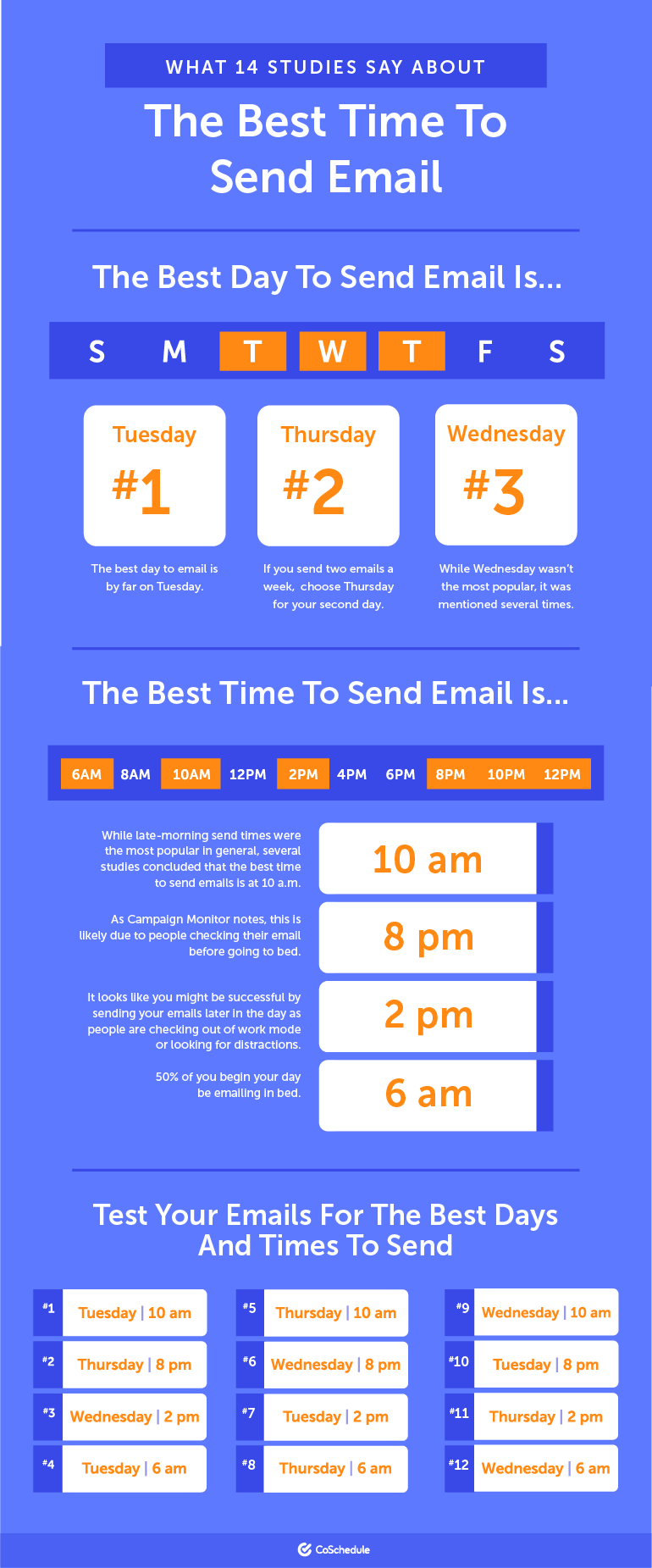
As it relates to the customer journey, timing ensures subscribers get the content they need to help move them down the funnel. In this sense, its action-based and industry benchmarks hold little to no weight.
The right time to send a welcome email is immediately after a prospect has signed up to your contact list, for example. This will help you capitalize on their interest to increase brand awareness.
The right time to send an abandoned cart email is after a prospect has left your site without completing a purchase. This will help you re-engage them to drive action.
In general, it’s important to segment your lists so that content reaches the right people. Sending an introductory marketing course to an experienced marketing manager, for instance, wouldn’t have the desired impact.
Step 4: Track, analyze, and improve
Email marketing data helps you answer the important questions about who’s reading your emails and what actions they’re taking. This can be used to fine-tune future campaigns:
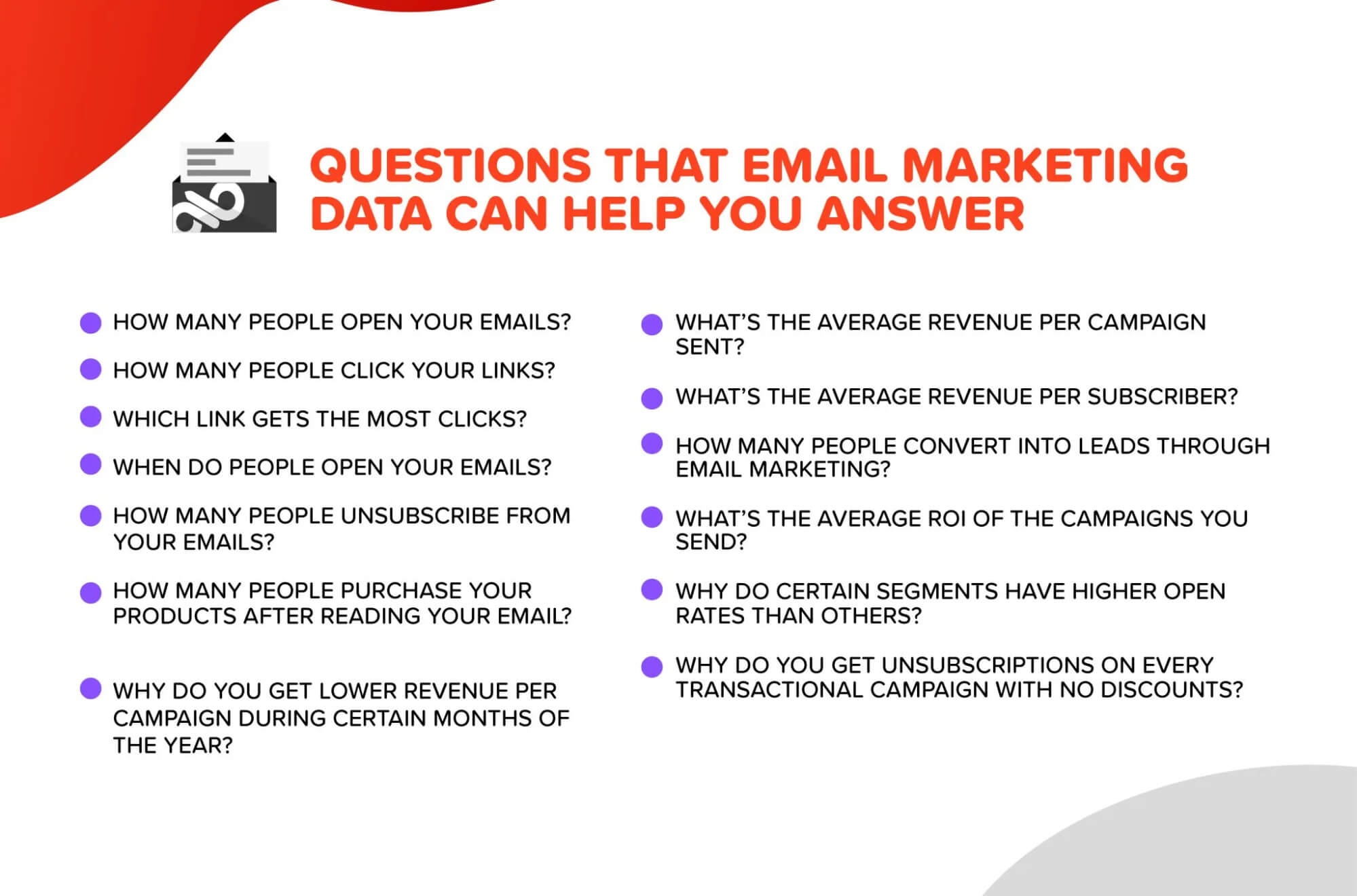
Here are the key metrics to pay attention to when analyzing emails:
- Open rate: The percentage of recipients who open an email
- Click-through rate: The percentage of recipients who clicked on one or more links in an email
- Unsubscribe rate: The percentage of recipients who unsubscribed after opening an email
- Conversion rate: The percentage of recipients who clicked a link and completed a desired action (e.g. completing a lead generation form or purchase)
- Bounce rate: The percentage of total emails that couldn’t be successfully delivered
- List growth rate: The rate at which your list is growing
- Sharing rate: The percentage of recipients who clicked on a share button
- Overall return on investment: The ROI of your email campaigns (i.e. total revenue / total spend)
Use this information to improve your emails and clean up your list to enhance the value of your data. Also, compare your findings against your goals and objectives to find out if you’re meeting them.
But don’t rely on numbers alone. Discuss campaign results with sales and support teams to discover the why behind the what.
If emails aren’t hitting the mark with a particular audience, collectively brainstorm new ways to reach and engage customers.
Elements of high-performing marketing emails
The specifics of your email (how it looks, what it says, the CTAs, etc.) will be influenced by your strategic goals. An email for someone in the consideration stage will be different from an email sent to a recent customer, for example.
But there are unifying qualities that every email should have regardless of whether you’re collecting subscribers, upselling, or creating brand advocates.
We’ve already covered timing and analyzing, both of which are crucial to your emails hitting the mark.
Let’s look at six other essential components of a high-performing email.
1. List segmentation
Segmenting your list goes hand-in-hand with timing. It ensures subscribers don’t receive emails that aren’t relevant to them, which could disrupt their customer journey and damage their personalized experience.
Here are some statistics that show how powerful a tool segmentation can be:
- Campaign Monitor research found that marketers have found a 760% increase in email revenue from segmented campaigns
- A SuperOffice segmented campaign experiment earned a 94% open rate and a 38% CTR, versus 42% open rate and 4.5% CTR in a non-segmented email campaign
- 88% of users agree that they are more likely to respond to an email favorably if it looks like it’s been specifically created for them
Look at your email list and CRM. Start to group people based on similar demographics and characteristics. This can include:
- Interests
- Behavior
- Customer personas
- Location
- Purchase history
- Previous email engagement
This will provide a basis for offers and allow you to align your audiences with your email campaign goals.
2. Email personalization
According to Hubspot, message personalization is the number one tactic used by email marketers to increase engagement rates.
For good reason. 80% of consumers are more likely to make a purchase when brands offer personalized experiences.
Segmentation is one form of personalization. Other tactics include:
- Using subscriber names in subject lines and body copy
- Creating content that’s relevant to the recipient’s interests
- Dynamically suggesting new products based on previous purchases
Take emfluence. At the end of each year, Marketing Platform users receive an email that shows how many points they’ve earned, how many emails they’ve sent, and the different badges they can earn next:
Personalization starts with a name in the subject line:
“Smiles Davis, see what you’ve accomplished with emfluence!”
Then continues into the headline copy and the content, which is generated based on a user’s activity.
Without personalization, the email would come across as generic and lose its celebratory tone. It would also reduce the motivation for users to go after the next badges.
Dominos also uses personalization well to tempt subscribers into ordering pizza:
Again, the recipient is addressed by name. They’re also shown their account status and recommended products based on purchase history.
At the bottom of the email, Dominos shows customers their local store, using subscription information to add the feel that Dominos cares for its customers.
Learn as much as you can about subscribers’ preferences, purchases, and engagements to create a custom experience.
If you’re new to this stuff, Shanelle Mullin’s excellent beginner’s guide to email segmentation and personalization is a great place to start.
3. Benefit-focused subject lines
The email subject line is the attention-grabber. It’s the first thing people see of you in their inbox and often determines whether or not they click through.
33% of email recipients open emails based on the subject line alone, while 69% mark an email as spam based on the subject line alone. So it’s important to get it right.
Subject lines are trial and error. What works for one person or email may not work for another.
Here are some core principles to keep in mind, from Shanelle Mullin’s CXL article on improving open rates:
- Continuously test your subject lines and measure your success by open rate.
- Research your audience’s voice through surveys and interviews.
- Use tasteful personalization meaningfully, but test it to prove that it works for your audience.
- Choose clarity over being trendy or clever. If you’re considering an empty suitcase or curiosity gap, think about the expectations you set with your audience upon opt-in.
- Be aware of mobile subject line character restrictions.
- Choose every word carefully. In subject lines, a single word can make a big difference.
- Segment your email list to uncover deeper insights about what’s working and what’s not.
- Treat preview text and from name as an extension of your subject line.
You can find inspiration for catchy subject lines by looking at your own email inbox.
What compels you to open an email?
Ask friends and colleagues too. What about a subject line makes them click-through?
Build a swipe file of examples that you can dip into for copywriting inspiration.
4. Compelling body copy
Your subject line hooks readers in. But it’s the body copy that turns attention into action.
Good body copy should simply help readers understand your offer and how it benefits them. It doesn’t need to be fancy or use any magic words. It just needs to get your message across.
Take Smashing Magazine’s personalized email for its book ‘Click!’:
In three sentences, it explains what the product is and how it benefits readers. And they’ve managed to fit in compelling CTAs along the way.
That brief intro gives readers enough information to make an informed decision.
For those who aren’t ready to jump in feet first, Smashing Magazine digs a little deeper. It explains why they’ve created the book and details exactly what readers will learn.
The copy is clear, simple, to the point, and written in a tone and style that fits Smashing Magazine’s audience of designers and developers.
To help you write compelling email content and position your product or service as the best solution, there are two easy formulas you can follow:
1. BAB (Before-After-Bridge)
BAB is a conversion-driven framework that works in three parts.
1. Before: Depict a problem that’s relevant to your audience and paint a picture of a world where they’re facing this problem.
Example:
“For a busy social media marketer, it’s tough to find time to post daily across multiple platforms.”
2. After: Tell your audience how their world would be if the problem didn’t exist.
Example:
“Imagine, there was a tool that lets you schedule content in advance and automatically posts it at times your audience is most likely to see it?”
3. Bridge: Introduce your product as the solution.
Example:
“This is the power of Social Scheduler, a scheduling tool built to make social media marketers more productive.”
2. The Four P’s
The Four P’s are designed to make an offer compelling to the reader by appealing to their wants and needs.
As the name suggests, it works in four parts:
1. Promise: The ‘what’s in it for them.’
Example:
“Engage your social media followers at the best possible time.”
2. Picture: A picture of what the reader’s world would look like after you’ve delivered on your promise.
Example:
“By sending the right message at the right time, you can earn more clicks and convert those clicks into leads and sales.”
3. Proof: Backing up your promise with proof.
Example:
“In fact, when PopularBrand used Social Scheduler to schedule and automate its social media content, they were able to increase traffic by 500% and conversation rates by 108%.”
4. Push: Driving the reader towards action.
Example:
“See how powerful our tool is for yourself. Create a free account today!”
Optimized CTAs
CTA buttons are the triggers that get people to click through to your landing page.
The words, color, and placement of these CTAs are all important in inspiring action. Getting them right requires a good understanding of your audience and consistent A/B testing.
Ott Niggulis’s CXL article on mastering the call to action is stacked with actionable strategies to improve your CTA. It’s well worth reading the post in full, but here are some of the key takeaways:
On the copy:
- Use trigger words: These are the words that inspire action. If your goal is to get a reader to trial your product, “Book a demo” or “Start a free trial” are the triggers. Stick to simple language and do not try to be clever. Make the desired action as easy to understand as possible.
- Call it what it does: The opposite of clever is vague, in this sense. Don’t do that, either. The button text must explain what the button does. “Download the report” is easy to understand. “Click here to discover what’s inside” is not.
- Add benefits: Directly next to the CTA, add copy that boosts value. For example, directly above “Order Now” in Domino’s email, they’ve put “$ 9.99”. Inserting the low price benefit next to the CTA is enticing and makes it harder to ignore.
On creating a hypothesis
Ask yourself:
- What is my prospect’s motivation for clicking this button?: Speak directly to this answer. If the motivation is to buy a retail item “Shop now” makes far more sense than “Head to our website.” The latter doesn’t light up their emotions. Shop now gets you to the same place, but with a purpose behind it.
- What is my prospect going to get when they click this button? If you’re sending them a free gift, for example, “Get my gift” is more straightforward than “Click here to see what’s inside.” The former tells the reader that the gift is one simple step away, while the latter is less straightforward and could potentially take more than one step to reach.
On placement:
Use email heatmaps to see how people are interacting with your email content. This will give you a good idea of where CTAs can have the best impact.
For example, this ecommerce example image from Mailchimp shows that the links and image at the top of the page attract the most heat:
In this instance, it makes sense to place a CTA above the fold.
To inspire your CTA button design, take a look at these 20 CTA examples put together by Alex Birkett.
Mobile-friendly design
81% of all emails are opened and read on mobile devices. If your email isn’t correctly optimized for the recipient’s device, 80% will delete it immediately.
The leading email marketing software all offer drag-and-drop email templates designed to work responsively across all devices.
However, you must create content with the mobile experience in mind. This means:
Putting important content above the fold
Users should immediately know what the purpose of the email is without having to scroll to find out.
If you look back through the examples we’ve used in this article, you can see how every brand has done this.
Keeping copy concise
Reading text on a smaller device can be a strain on the eyes. Where possible, let images do the talking and use short-form copy to drive the message home.
Newspaper Club’s product announcement is a good example of email design for mobile:
Images give recipients a clear idea of the quality of the product, while brief copy tells readers what’s new.
The reader has all of the information they need to investigate and the email works seamlessly on any device.
Using clear spacing
Space text and CTAs so that they are easy to digest. Keep paragraphs short (no more than three sentences) with space between them to act as resting points for the eyes.
Where you have key information to get across, consider bullet points. They help skim-readers pick out parts of the copy that grab their attention while easing eye fatigue.
This update from Airbnb is a good example of a well-spaced email:
Sentences are short and paragraphs are given room to breathe. Bullet points (or in this case, icons) with bolded headers draw attention to the message.
Had this been written as a single block of text much of that information would have been lost.
Optimizing for tapability
Mobile readers use their fingers and thumbs to scroll emails and click links. Make it easy for them to perform actions with links and buttons that are large enough to click.
Also, ensure that buttons are surrounded by whitespace to prevent the wrong link from being clicked.
Havenly’s product teaser is a great email example:
We can see here that website and social links are clearly spaced so they’re easy to tap. It’s a small detail, but crucial to a positive customer experience. It also means that actions aren’t being taken accidentally and thus distorting your data.
Conclusion
Effective emails are built on timing: sending the right message to the right people at the right point in their customer journey.
Getting that timing right is a combination of customer knowledge and your marketing know-how.
Think about where in the customer journey email will be most beneficial to your overall marketing strategy. Then, create segmented and personalized campaigns using the tried-and-trusted elements of high-performing emails to experiment and build templates that inspire action.
Digital & Social Articles on Business 2 Community
(39)
Report Post





